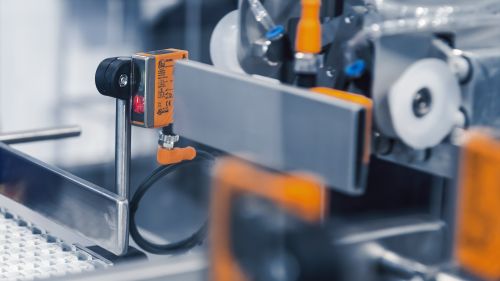Track & Trace for a transparent supply chain
Seamless tracking in real-time
In 2024, the fundamental questions of Who, What, When, Where, and Why continue to drive advancements in supply chain management. What was delivered, when, and where? Where exactly is the material needed – in a specific production line or warehouse? And who currently holds my empty containers in the yard? Detailed answers to these questions are provided by track & trace solutions, but the ultimate solution lies in Shop Floor Integration (SFI), including the integration of the information into downstream SAP solutions, as well as the connection to the Industrial Internet of Things (IIoT) world.
The following process, which takes place every day around the world, is an example of exactly what such solutions can achieve: Products, materials or containers (including assets) are equipped with tags. These can be RFID tags whose information or signals are read by so-called "reading devices" – for example, when container 1 is moved from warehouse A to warehouse B using a forklift.
By: Sarah Meixner for ifm
One of the main players: the tag and its information
However, to make it clear what exactly is in container 1 – bananas or business clothing – the tag must first be provided with the corresponding business or process data. This can include material numbers, a handling unit or even a serial number. If the load carrier now passes a reading station – ranging from a simple handheld reader to a specially built, three-metre-high RFID gate with various antennas – this reads the stored information and tracks the goods movement with the current locations.
The ultimate: integration into the existing SAP infrastructure
As all this information is essential for business processes in today's predominantly international supply chains, professional track & trace solutions will subsequently enable the automated booking of the collected information in the underlying enterprise resource planning (ERP) or enterprise warehouse management (EWM) systems in 2024.
An IIoT platform such as ifm moneo is suitable as middleware, for example, as it scores points in several ways: firstly, the various reading devices are connected to it, secondly, it stores the collected information and thirdly, it visualises the transaction data in a kind of map, the so-called "shop floor layout" – and this, in turn, provides the answers to the W questions posed at the beginning.
Tipping the scales: Shop Floor Integration (SFI)
This is where specialised manufacturers such as ifm come into play, having developed the Shop Floor Integration solution based on extensive process experience and practical expertise. SFI triggers all downstream business processes so that intelligent automation takes place – or to put it another way: bridging the gap between sensor technology and IT. Ultimately, sensor data from the production level can be processed and prepared in real-time, which in turn optimises decision-making and therefore supply chains as a whole. SAP modules such as Material Management (MM) and Sales & Distribution (SD) could also benefit from the collected data. The result? Companies finally have access to reliable information, bookings and real-time information, automate subsequent processes – eliminating the need for manual bookings, for example – and benefit from complete transparency.



